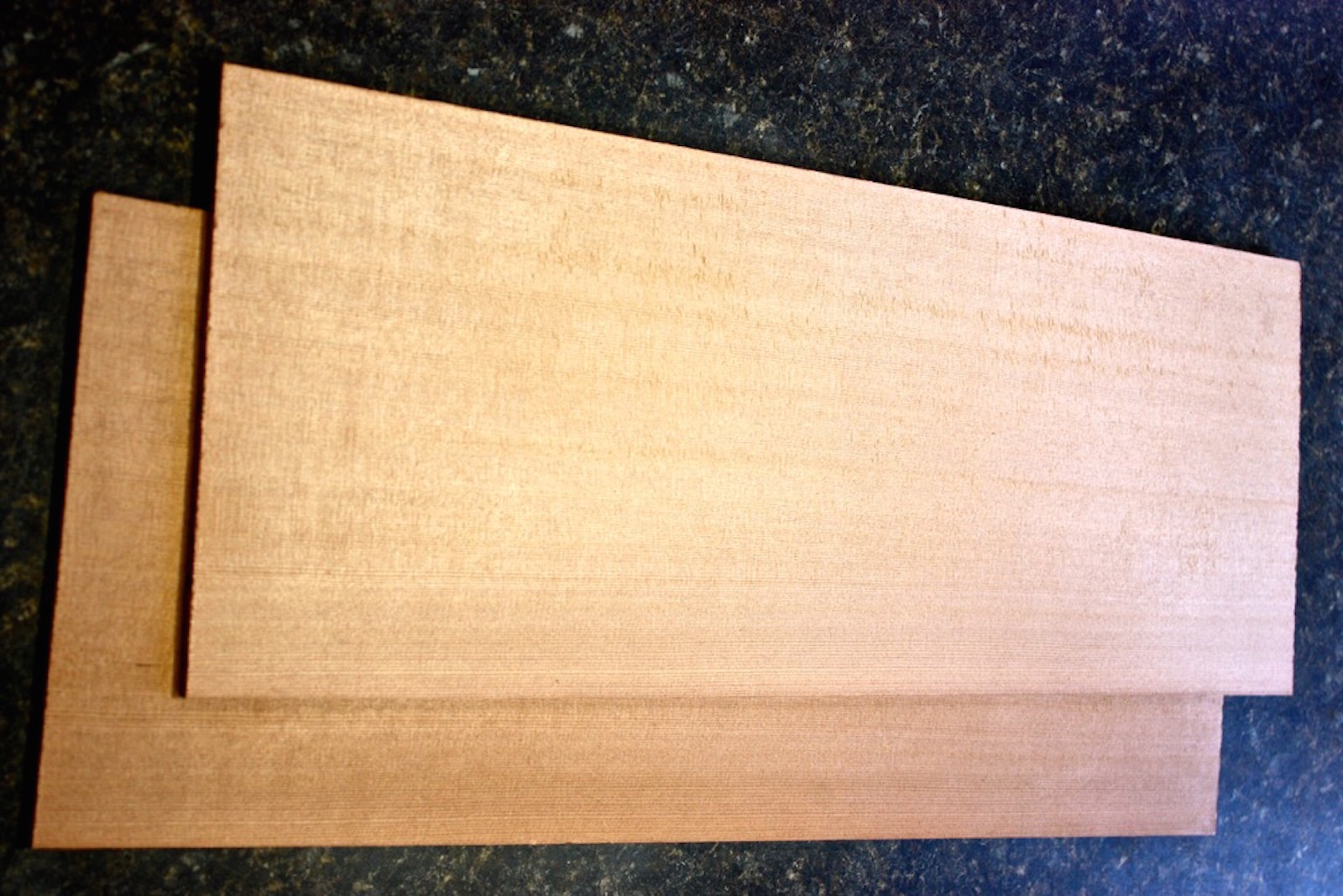Which wood is better for guitar soundboards: cedar or spruce. This is one of the oldest controversies in the world of the guitar. Each wood has its own partisans, some of them quite passionate.
Actually, there is no basis for any controversy at all. If ever there was an issue that is, at bottom, a matter of personal taste it’s spruce v. cedar. That’s why I never tell anyone which one to choose, just like I never answer the question, “What strings sound best on your guitars?” The two woods do produce subtle differences in sound outcomes, but those characteristics are virtually impossible to describe in words.
If the spruce/cedar choice on the part of the guitarist is subjective, the strategies for finding, processing and assembling these woods into guitars in anything but. You wouldn’t know this from looking at a soundboard set as it is when I receive it from a supplier. Go ahead, click on the photo of an unjointed cedar soundboard set below to open it, enlarged, in a separate window. Click the enlarged photo again to zoom in, then move your cursor around to view different areas of the surface.
Pretty crude, huh, scruffy looking, rough to the touch. Heck, that’s just a hunk of raw timber, anybody could produce that.
Not. In fact, the initial steps of procurement, cutting, seasoning, picking and quality-evaluating any woods used in guitar making constitute a special art/science requiring considerable knowledge, a little like cutting precious gems if on a larger scale. I would never dream of trying to do this for myself; this is something I leave to the experts and their vendors.
Once the wood is in my hands and on the way to becoming part of a guitar, the subtle physical differences in the woods—despite their shared taxonomic order, commonly known as conifers—require that they be handled differently by a luthier to produce optimal tone results. The most important difference factors I’ve discovered over the years are—
- Stiffness/weight ratio: Cedar is almost always greater.
- Density: Spruce is generally greater, although some specimens of Engelmann spruce fall within the general range of cedar. More on that.
When I pick woods, these are the densities I’m looking for (specific gravity)—
- Cedar: Minimum .31, maximum .38. Less than SG-.31, I start getting concerned about general fragility, so I’ve never used such a set. More than SG-.38: well, frankly, I’ve only had one or two such sets in my hands in my entire career, and I never did get around to trying them out.
- Spruce: Minimum .41, maximum .48. That’s quite a bit greater than the cedar range. Long ago I made a couple of guitars with spruce in the high end of the cedar density range; they were not among my best guitars. I remember the wood seemed somewhat limp and “spongy” to me.
Without getting into the details of graduating (differential thicknessing in various parts of the soundboard), the overall thickness of spruce must be less than cedar in order to keep the aggregate mass of a spruce soundboard less than a cedar. Guitar strings have limited potential energy and can move only so much mass successfully. The G-string is especially low-energy and is most affected by excess soundboard mass.
At some point in the future, I will get into more detail about graduating for the benefit of luthiers as part of the “Just Pass It On” project.

